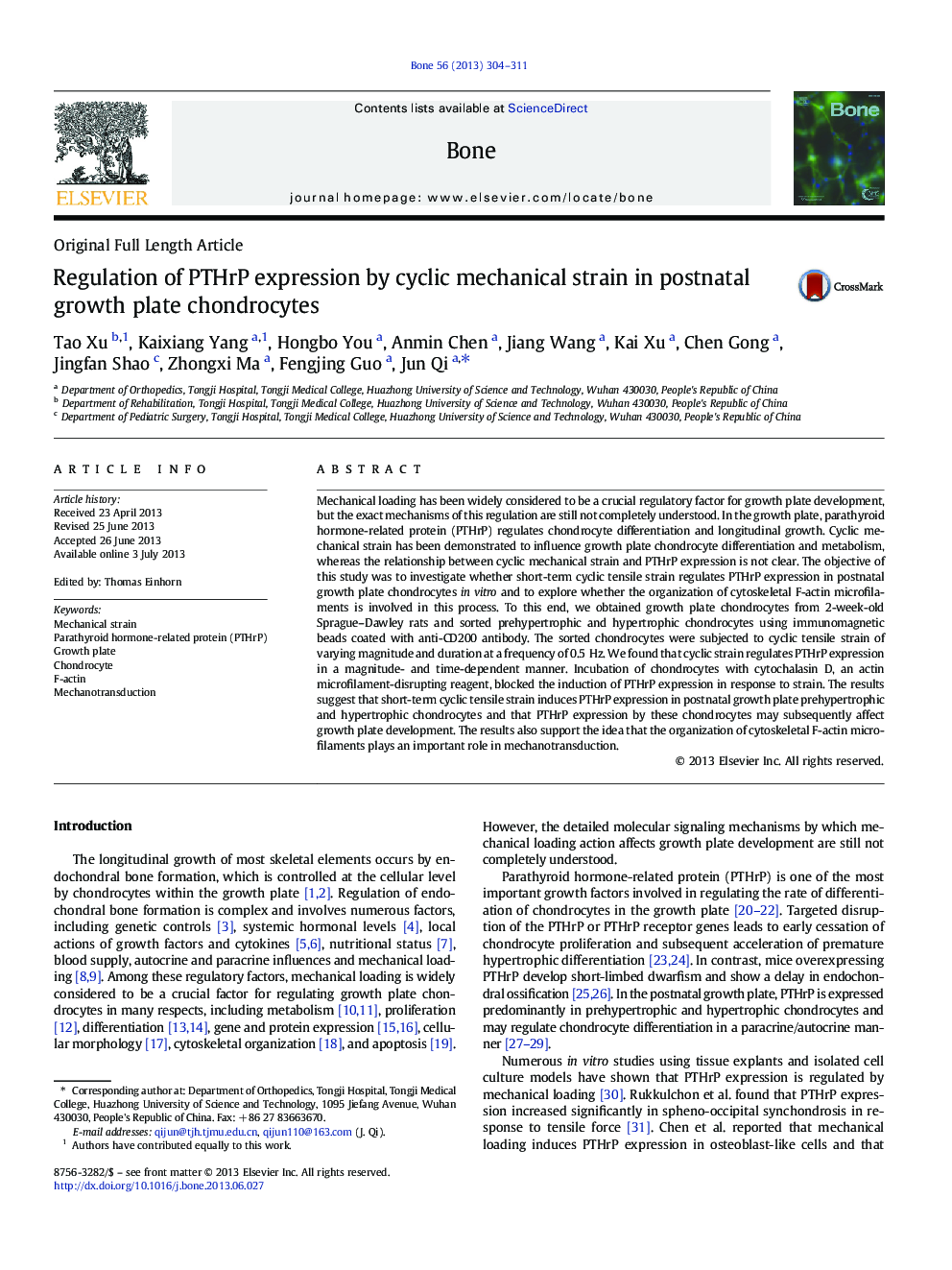| Article ID | Journal | Published Year | Pages | File Type |
|---|---|---|---|---|
| 5890955 | Bone | 2013 | 8 Pages |
â¢Postnatal growth plate prehypertrophic and hypertrophic chondrocytes were sorted by MACS.â¢Cyclic tensile strain (CTS) induced PTHrP expression in prehypertrophic and hypertrophic chondrocytes.â¢PTHrP expression was regulated by tensile strain in a magnitude- and time-dependent manner.â¢F-actin microfilament organization plays an important role in mechanotransduction.
Mechanical loading has been widely considered to be a crucial regulatory factor for growth plate development, but the exact mechanisms of this regulation are still not completely understood. In the growth plate, parathyroid hormone-related protein (PTHrP) regulates chondrocyte differentiation and longitudinal growth. Cyclic mechanical strain has been demonstrated to influence growth plate chondrocyte differentiation and metabolism, whereas the relationship between cyclic mechanical strain and PTHrP expression is not clear. The objective of this study was to investigate whether short-term cyclic tensile strain regulates PTHrP expression in postnatal growth plate chondrocytes in vitro and to explore whether the organization of cytoskeletal F-actin microfilaments is involved in this process. To this end, we obtained growth plate chondrocytes from 2-week-old Sprague-Dawley rats and sorted prehypertrophic and hypertrophic chondrocytes using immunomagnetic beads coated with anti-CD200 antibody. The sorted chondrocytes were subjected to cyclic tensile strain of varying magnitude and duration at a frequency of 0.5Â Hz. We found that cyclic strain regulates PTHrP expression in a magnitude- and time-dependent manner. Incubation of chondrocytes with cytochalasin D, an actin microfilament-disrupting reagent, blocked the induction of PTHrP expression in response to strain. The results suggest that short-term cyclic tensile strain induces PTHrP expression in postnatal growth plate prehypertrophic and hypertrophic chondrocytes and that PTHrP expression by these chondrocytes may subsequently affect growth plate development. The results also support the idea that the organization of cytoskeletal F-actin microfilaments plays an important role in mechanotransduction.
